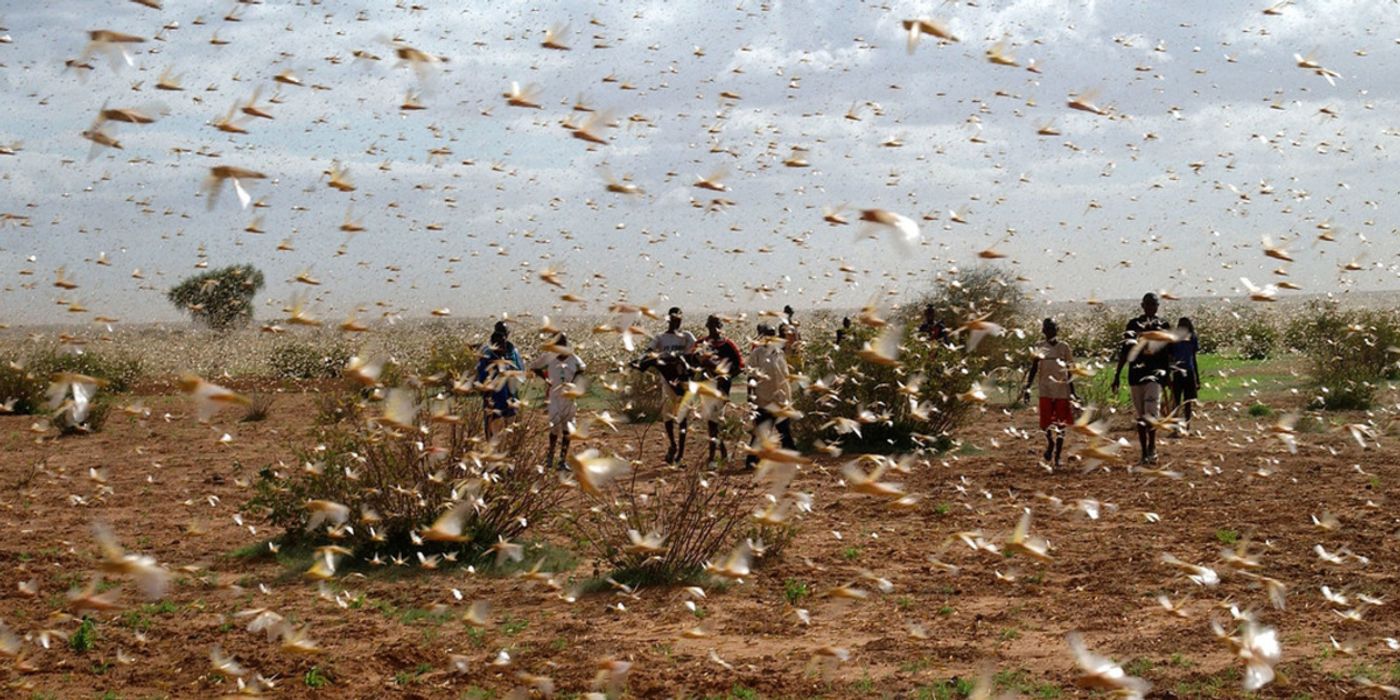Pheromone Molecule at the Center of Global Locusts Crisis
Since earlier this year, agriculture and food production in the developing world have been taking heavy damages from an unusual locust outbreak. It's believed that shifted climate patterns led to a population explosion of the insect.
Giant swarms of locusts, in the number of billions, were seen flying over and munching on vegetations across hundreds of thousands acres of land. The plaque started in West Africa, affecting countries like Kenya, Uganda, and South Sudan. The swarms slowly migrated east toward the Arabian Peninsula and eventually reached West India and Pakistan.
A team of Chinese entomologists recently reported their findings that represents a turning point for the battle against locust infestation. Their research revealed that 4-vinylanisole (4VA), a pheromone molecule, can act as an effective gathering call that draws nearby locusts to form a big aggregation.
The pandemic threatens the people of East Africa -- and now locusts threaten their food (PBS News)
It may not be obvious, but locusts aren't necessarily into collective living. Certain neuroactive molecules (called the aggregation pheromones) secreted from their bodies can entice others in the vicinity to gather and form a swarm. In the absence of these pheromones, an insect can naturally grow accustomed to a solitary lifestyle.
Before this work, scientists have yet been able to identify the chemical makeup of aggregation pheromones. The researchers, most of whom affiliated with the Chinese Academy of Sciences, found that 4VA can draw a crowd with both gregarious and solitary locusts, no matter their age or gender. What's more, the production of this pheromone can be triggered by a small group of only four to five insects.
Through experiments on the locust's electrophysiology and olfactory receptors, they also discovered that 4VA act on specific regions of the insect's antennae called basiconic sensilla. These are the functional clusters packed with olfactory receptor neurons, which are responsible for encoding a wide variety of odors for the little critter.
The authors hope that their findings can lead to the development of control strategies to contain the current and future locust outbreaks. A possible solution is to set up small, localized killing traps that use 4VA a lure. Alternatively, an inhibitor can be synthesized to block the receptors on the insect's olfactory neurons, so that the locusts won't be drawn to a swarm.
Their work is published in the journal Nature.
Source: Science Alert









